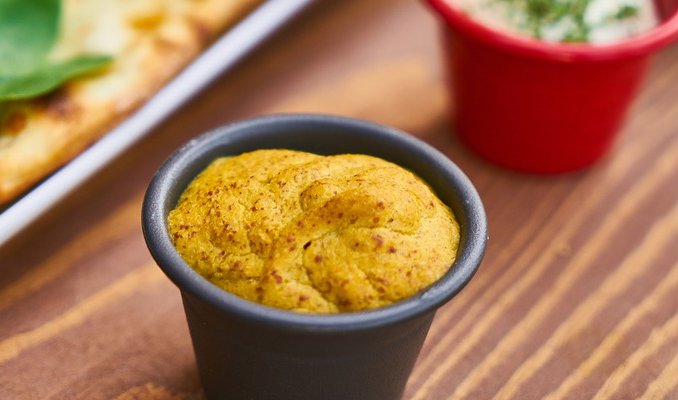Mustard is a condiment that’s found in many households. Depending on the type of food consumed daily, it is either used often or very seldom. Either way, most people always have a bottle of mustard somewhere in the kitchen. If it’s not in the fridge, it’s usually in the pantry. Before using it, most people will first look at the expiration date. If it’s near the expiration date or past it, they will wonder if it’s still good and how long it will last.
So how long does mustard last? Unopened mustard stored in the pantry will last 1 year after the Best By date, while opened mustard will last 1-2 months. In the fridge, an opened bottle of mustard will last 8-12 months.
Above is just an estimated time of how long mustard will last. Other factors that affect their actual shelf life include storage temperature, ingredients used, where it’s stored, and how often mustard is used. These factors could shorten or lengthen their shelf life.
In this short guide, we’ll go through how long mustard lasts, how to store them, how to tell when mustard is bad, and how to keep them fresh longer. If that’s the information you’re looking for, keep reading.
How Long Does Mustard Last?
At room temperature, open mustard will last 1 to 2 months. Usually, it will last much longer than that if it’s stored properly. Keep mustard away from direct sunlight and other heat sources will yield them longer shelf life.
As for unopened mustard stored at room temperature, it will last for 1 year after the printed date on the bottle. Keep them stored in the pantry or the cabinet where it’s cool and dry.
If mustard is stored in the refrigerator, expect an open bottle to last for 1 to 2 months. However, as long the bottle of mustard is sealed properly, it can last much longer than that. The only quality issue is with the texture of it. The longer it sits in the fridge, you may notice an issue with separation and the mustard drying out.
Mustard that is unopened will last for about 1 year after the expiry date if stored in the fridge. However, storing unopened mustard in the fridge is not necessary as it will not extend its shelf life. Storing mustard in the fridge or the pantry will yield the same shelf life.
Does Mustard Go Bad?
Mustard can go bad, but it rarely happens if you store them properly. Most of the time when they go bad, it’s usually due to improper use and storing them incorrectly.
Mustard contains a high amount of acid, which helps prevent mold and other bacteria from growing on them.
However, over time as mustard degrades in quality, the acidity level will slowly drop. This will cause bacteria to start growing on them.
When using mustard, always use a clean utensil to scoop the mustard from the jar.
Also, it’s important to never pour leftover mustard back into the bottle or jar. Doing so will contaminate the rest of the mustard in the container.
Storing mustard at room temperature with the bottle left open will cause the mustard to go bad. The longer the bottle is left open, the more bacteria will start growing inside the bottle.
Tips: If the mustard is dry, add about a tablespoon of vinegar and stir it. The mustard should be able to be used again.
How To Tell If Mustard Is Bad?
When mustard goes bad, there will be signs to look for. Remember, mustard rarely goes bad, so you’ll need to inspect them carefully before tossing the whole bottle away.
One of the signs to look for is organic growth inside the jar. These will usually be bacteria in the form of mold.
If the bottle or jar of mustard has been stored at room temperature for a long time, check to see if there’s any mold in their first.
Another sign to look for is the dryness of the mustard. If they seem to be dried, almost like a paste, it means it’s going bad. However, if there is no mold growing inside the container, add some water, and stir it.
The last thing to look for is the expiry date on the bottle. If it’s been over 2 years past the printed date, discard the bottle of mustard right away.
As mentioned earlier, mustard doesn’t go bad, but it will degrade in quality over time. After 2 years, you’ll probably end up with mustard that has a bad flavor.
How To Store Mustard
At room temperature, an open bottle of mustard should be stored away from direct sunlight and other heat sources. The heat will cause the mustard to go bad quickly. Most of the time, the issue from the heat will be separation and drying out. These two things don’t necessarily mean the mustard is bad, as you can simply add some water to make them useable again.
For an unopened bottle of mustard, it should be stored in a cool, dark, and dry place. The best place is in the pantry of the cupboard. As long as the bottle hasn’t been opened, it can be stored in the pantry and last for a very long time.
In the fridge, for opened mustard, they can be stored in their original bottle or jar. Just make sure that the container is sealed tightly. If not, the mustard will start to turn brown from oxidation. The mustard is still safe to eat, but it won’t taste as fresh as it should.
For unopened mustard, storing them in the fridge is actually useless. Storing mustard in the fridge will not extend its shelf life, and it will just take up space in the fridge. As long as the mustard hasn’t been open yet, storing them at room temperature in the pantry or cupboard is a better choice.
Can You Freeze Mustard?
Mustard can be frozen in the freezer. Storing them in the freezer doesn’t really make it last much longer than storing them in the fridge. The freezer will help preserve the freshness for an extra 3 or 4 months.
If you really want to freeze mustard, never use the bottle or jar that it came with. Since mustard expands during freezing, it could crack the bottle or the jar. This will leave you with a mess in the freezer.
Instead, pour the mustard into an airtight container and seal it tightly. The container will prevent air from getting to the mustard and cause freezer burn.
Another choice for freezing mustard is to freeze them as a mustard cube. Simply pour the mustard into the ice cube tray and freeze them for 1-2 days. Once it’s completely frozen, transfer the mustard cubes into an airtight container or a freezer bag.
If using a freezer bag to store a mustard cube, make sure to remove as much excess air as possible from the bag before sealing it. The less air that’s in the bag, the lesser chance the mustard will get freezer burn.
How To Fix Mustard Quality Issues
Since mustard rarely goes bad, and it’s usually an issue with quality, you can actually fix them.
When a bottle or jar of mustard is open, the two issues that seem to affect them the most is separation and drying out. Below are the issues and what you can do to fix them.
Drying Out – This is a common issue with mustard that happens when you keep the container unsealed for a long time. Due to the heat, the liquid in the mustard will slowly evaporate and cause the mustard to dry out.
Additionally, drying out can occur when there is just a small amount of mustard left in the bottle.
To fix the issue, mix some wine or vinegar with mustard. Start with a teaspoon and slowly stir the mustard. If it’s still a little sticky, add an additional teaspoon of wine or vinegar.
After each teaspoon, taste the mustard to see if it tastes the same when it was fresh. If not, just discard the mustard.
Separation – This is caused when both open and unopened mustard stays in one place and untouched for a prolonged time. As it sits in the pantry or in the fridge, liquid and solid materials in the mustard will start separating. When you finally open the bottle, you may notice water sitting on top of the mustard. This doesn’t mean the mustard is bad, though.
To fix the separation issue, simply take a fork and stir the mustard until the liquid and solid properties blend in together.
After trying the solution to fix the taste of the mustard, but it tastes bitter, it’s best to throw it out. When mustard turns bitter, it usually means it’s past its prime.
Related Questions
What are the types of mustard?
There are many types of mustard, but the five main ones are yellow mustard, Dijon mustard, spicy brown mustard, honey mustard, and whole grain mustard.
Is mustard naturally spicy?
The mustard plant itself has a hot and pungent flavor. However, eating the mustard plant will not have that spicy flavor as described. You can only get that hot and pungent flavors when the mustard plant is mixed with cold water.


